Too hot to fish? Get yourself a trap and find some blue crabs | Fishing Roundup
In case you haven’t noticed, we’re neck deep into Ultra Summer.
Even the most avid anglers among us might hesitate to go bake for a bite. Times and conditions like these always make me wonder why more of us don’t take advantage of the soupy water and fill up on blue crab.
At most fishing piers, you’re likely to see as many — or more — crab traps lowered into the water as fishing lines cast about. Smart.
BIG OL' MOON Is supermoon a super fishing opportunity? Maybe, maybe not | Fishing Roundup
Count the blue crab as one of our true dual threats. Get enough of them, you have a meal. Get a few, you have an appetizer. If you can’t stomach either, well, you have yourself one great bait. The absolute best, some say.
If you have private access to a river bank or dock (or know a guy who knows a guy …), you need to buy a crab trap. After that, it’s a very cheap date — for bait, just toss in chunks of trash fish or, lacking that, some pieces of the chicken you won’t eat, such as the neck.
And you wonder why those crabs are so mean.
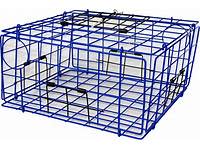
Yes, there are some size and bag limits you need to learn, and you have to pay attention to the females, but here’s where you might learn something you didn’t know about the blue crab: Look close enough, and there’s some beauty there.
The female’s claws are tipped in red, as if they’ve painted their nails. Turn them over, and you’ll see a colorful, lovely, dome-shaped apron on the underbelly. So pretty, you’ll think it was painted there.
However, if a rust-colored sack is attached, those are eggs and you must toss this one back.
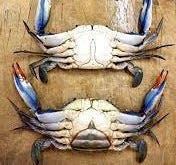
The male has blue claws and its underbelly contains something shaped in a manner that’ll take you back to anatomy class.
Not into crabs? Well, are you into big redfish and black drum? Wanna guess their favorite meal?
You can find plenty of instructional videos on how to prep and rig a (nearly) whole blue crab, or a chunk of it, to target some of our most prized fish catches.
Also, of course, you can simply buy blue crabs — fresh or frozen — at nearly all bait shops. Or you can finally decide to catch your own.
And if that’s the way you go, you can just sink your trap to the bottom and go find some shade. Or hell, take a nap. Come back later, raise the basket, and thank me later.
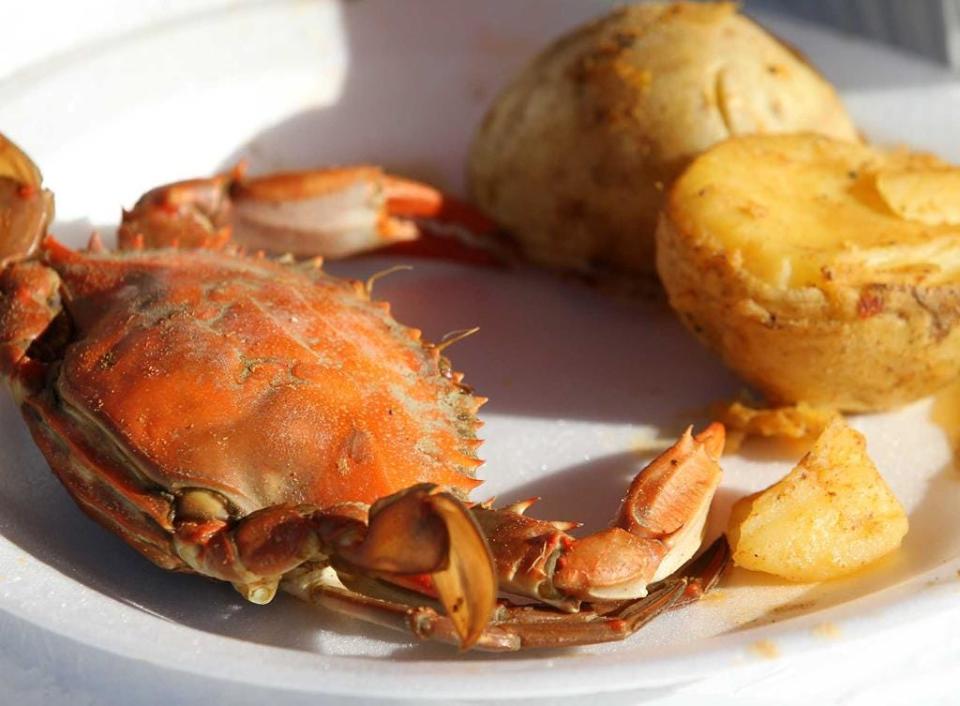
THIEVES! Why are sharks stealing offshore fish catches? Add this theory to the list | FISHING ROUNDUP
Halifax/Indian River
If you're not up with the milkman, it's tough out there under the french-fry lamp.
However, if you're an early riser . . .
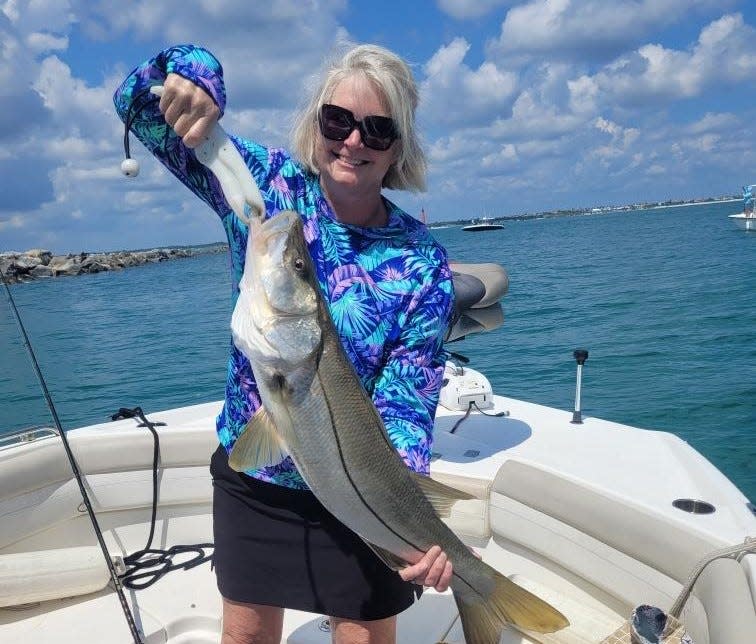
"The snook bite is hot, first thing in the morning, at the jetties," says Capt. Billy Pettigrew (RedfishTails.com). "The redfish bite is good at first light on the flats."
If you’re not out just before and after sunrise, this is the time of summer when local knowledge is key. And unless you “borrow” a secret hole from a longtime local, or simply get lucky, good luck.
However, if you’re out at night — particularly late — visit one of the local fishing piers near a bridge, or one of the fishable bridges themselves. Anglers are pulling up some big catches at night, particularly some trophy-sized snook — even slot snook remain off limits until next month, but they sure make for a nice picture before release.
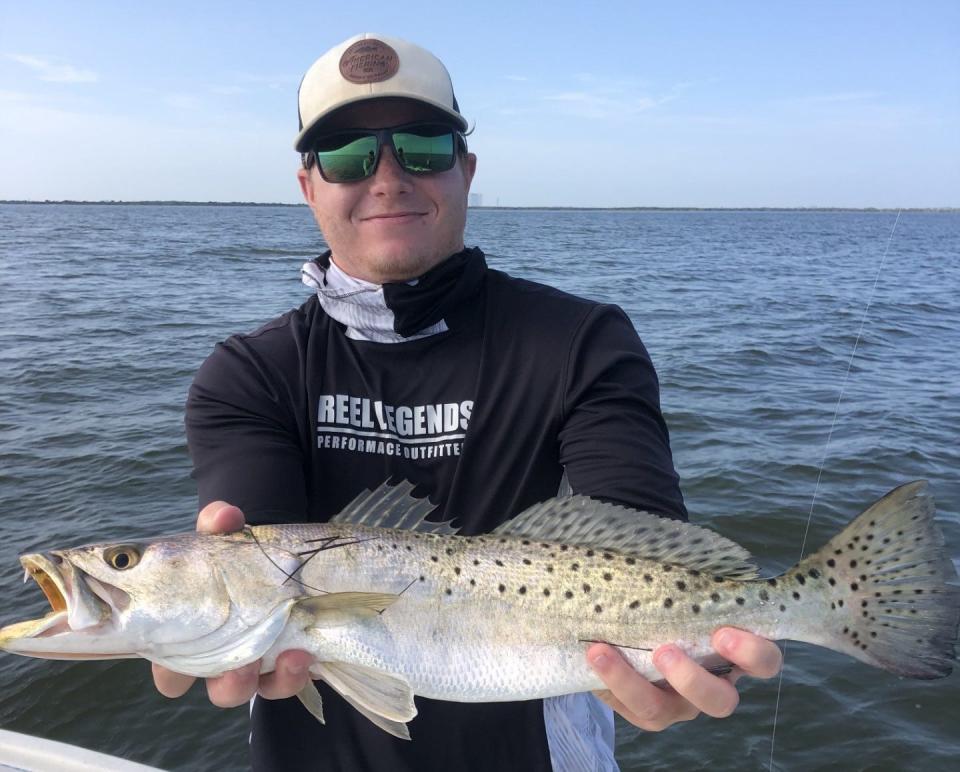
Pilings and big bridge walls will continue holding plenty of inshore mangrove snapper — as will any thick strand of mangroves you find (of course!). Remember, mangrove snapper must be 10 inches, and frankly, you won’t find ’em much bigger than that inshore.
Also, the daily bag limit is five per angler, and at 10-12 inches, it’ll take that many to feed a couple hungry folks. But they’re worth the time — dollar for dollar, many consider them the best tasting of all snapper.
Surf
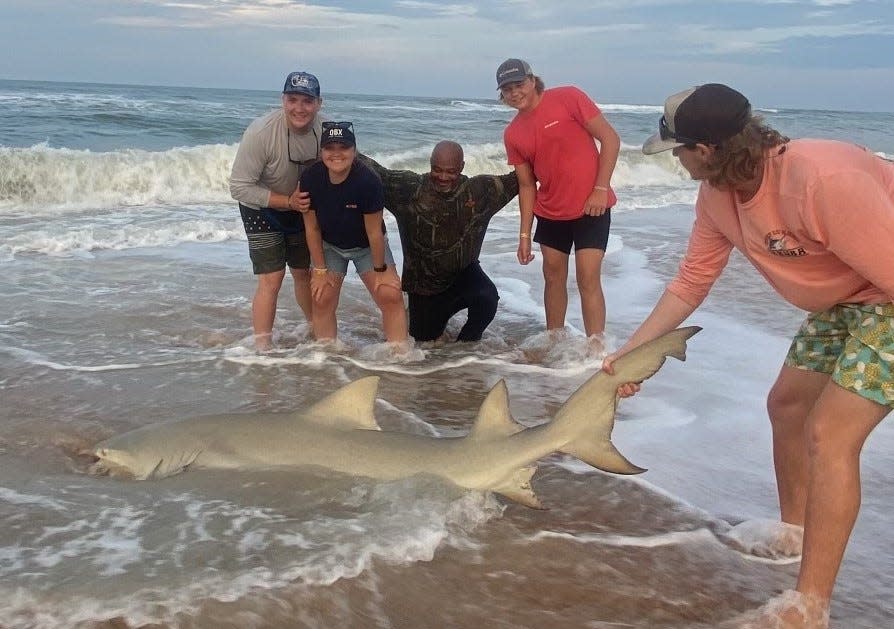
Our residential pompano, as opposed to all those snowbirds passing by twice a year, are biting one day and turning up their noses the next. Worth gambling on it being a good day, however, since even in warmer water they’ll put up their nice fight. Oh, and they taste amazing.
The pomp’s cousin, the palometa, is still loitering here and there, particularly on our southern Volusia beaches. And, as always, a whiting will find your hook eventually.
Still hearing mixed news on sandfleas. Some days you find them, some you don’t. The only consistency is size — they’re still small.
Some surf anglers swear by the sandflea-flavored Fishbites, though.
Flagler
Much the same as the county to its south. In the river, early-birds can find good catches in creek mouths and just off the ledges near oyster beds.
The occasional tarpon remains the highlight around Matanzas Inlet, where whiting, pompano and, of course, blues and jacks are always roaming.
Same around the corner on the beaches, where they’re “all in good number and size,” says Capt. Mike Vickers (Hammock Bait & Tackle).
Offshore
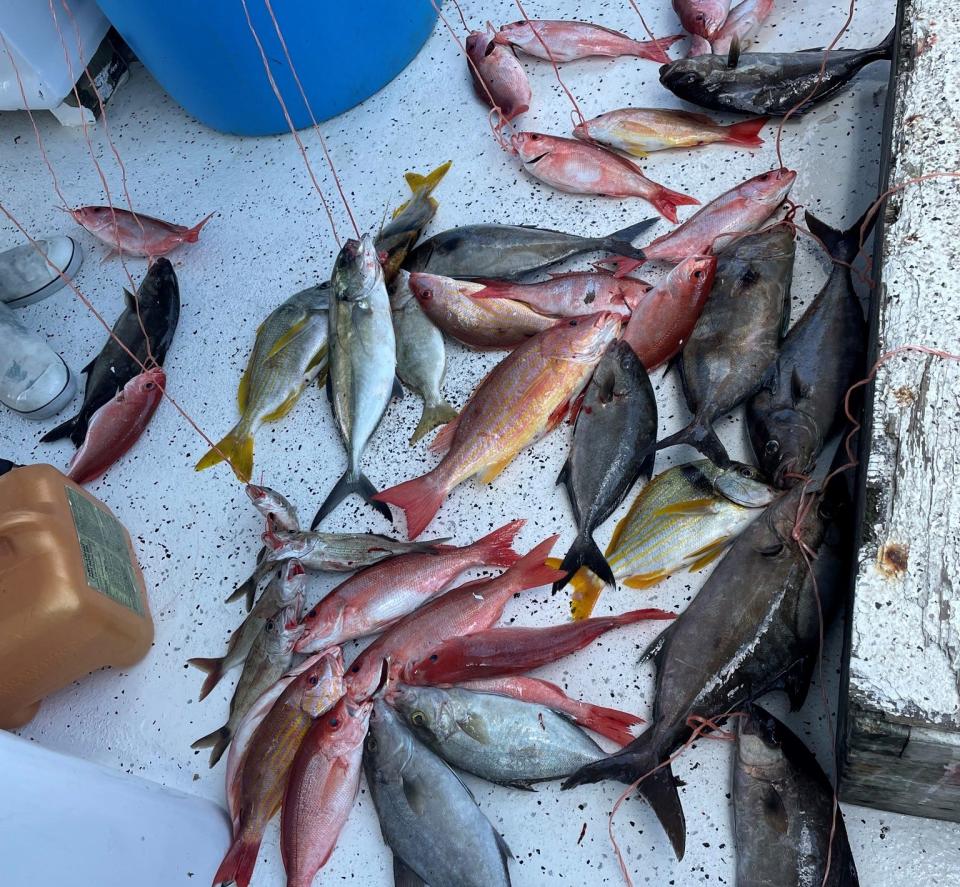
Capt. Scott Housel (Sudden Strike charter) figured the heat of summer provided a good time to take a short break from the water. He returned and things got even hotter. Oh well.
However, he says, he set up shop Monday at a 100-foot depth and caught 10 cobia. Talk about a solid workout.
In the spirit of making hay while the sun shines, the Sea Spirit has been heading out most days and returning to fill its Ponce Inlet filet tables with a wide, wide array of quality catches from the deep.
St. Johns
“Pretty hot,” understates Kerry McPherson, who owns and operates the South Moon Fish Camp in Astor. “Not a lot of fishermen now. Mostly boaters on the weekends.”
The hardiest among the St. Johns crowd, Kerry says, are still finding striped bass near the springs off Lake George. And the very-early-birds are finding bluegill.
To the south in DeLand, Capt. Bryn Adams (Highland Park) says those who beat the worst of the heat can still find the summertime staples — bluegill, warmouth and even some specks — in Lake Woodruff.
“But you must get out early,” she says. “By 10, the bite is over.”
Hands-On Seminar
Settle down, it’s not what some of you are thinking.
Another reminder about a neat educational opportunity next Thursday (Aug. 17) at the Halifax Sport Fishing Club — it's another one of their seminars teaching the very basics of fishing, such as knot-tying, rigging, etc.
Bring your own rod-and-reel or borrow one from the club.
While you might not need such instruction, there might be a kid, grandkid or spouse in your life who does. And by now, haven’t you learned things go much more smoothly when someone else is doing the teaching instead of you?
Go to the club’s website for more info: HSFC.com.
Hook, line and clicker: Send us your fish pics
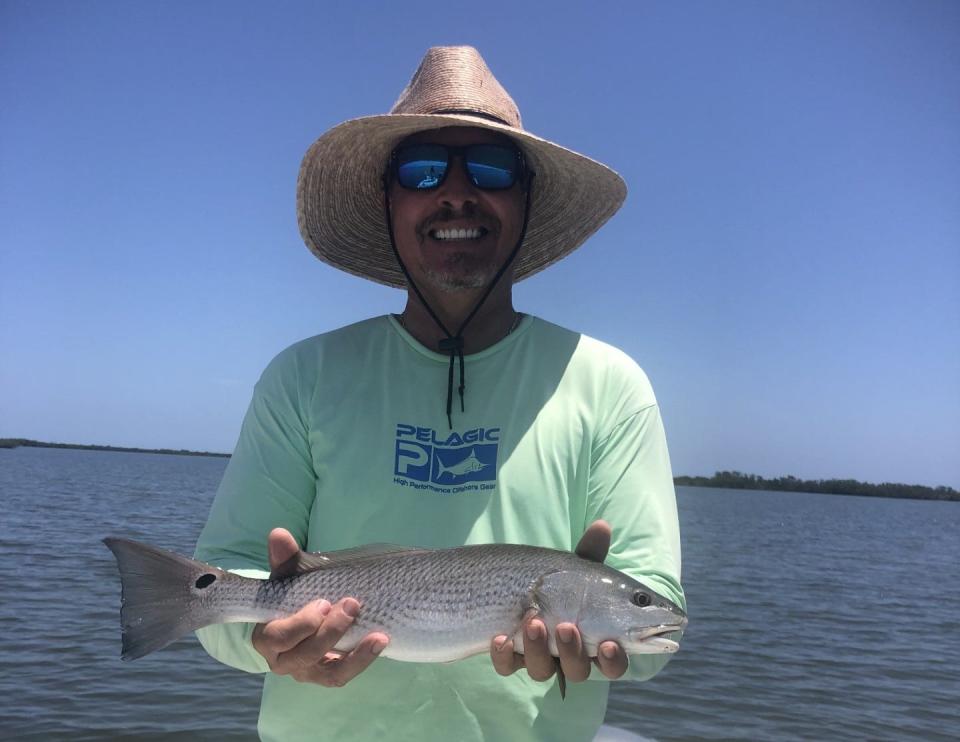
We want to see your most recent catch. Email your fish photos to ken.willis@news-jrnl.com.
Please include first and last name of angler(s), as well as type of fish (we're occasionally stumped). All are included with our online fishing report, and some occasionally make the print edition.
Do I need a fishing license?
You can find all the license info, including exemptions, on Florida's Fish and Wildlife Commission website: MyFWC.com. But the basics are: No: If you're 65 or older, 15 or younger, you don't need a license. No: If you're fishing with a licensed guide or charter boat, both of which purchase commercial licenses that cover their customers. Yes: Most everyone else, including visitors from other states. Yes: Even if you're a shore-based angler (shoreline, dock, pier, bridge, etc.). However: The shore-based license is free . . . But: You still need to register for that free license.
Where do I get a license and what does it cost?
Many bait shops sell licenses, as do the bigger retailers (Bass, Dick's, Walmart, etc.). Florida's FWC uses a third-party site for buying or renewing fishing licenses: GoOutdoorsFlorida.com. The cost: $17 for an annual license. Don't forget: Whether you're fishing fresh or saltwater, you need the specific license. Freshwater and saltwater licenses are both $17 annually.
I’m here on vacation, do I need a license?
Yes you do, and they're also available at GoOutdoorsFlorida.com or certain bait shops and big retailers. Cost: $17 for three days, $30 for seven days, $47 for a year.Also: Non-residents need to purchase that license even if they're just fishing from shoreline or shore-based structures. (Florida residents need that license, too, but they're free.)
This article originally appeared on The Daytona Beach News-Journal: Blue crabs are a great dual threat; get yourself a trap! Here's why

